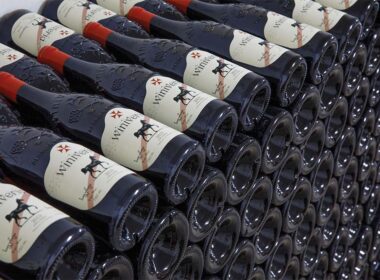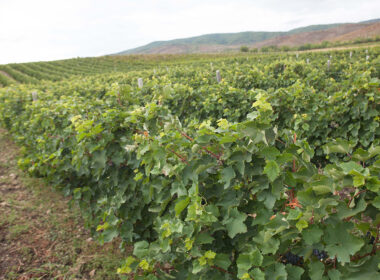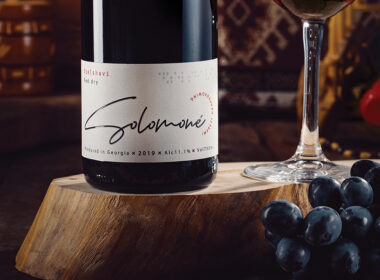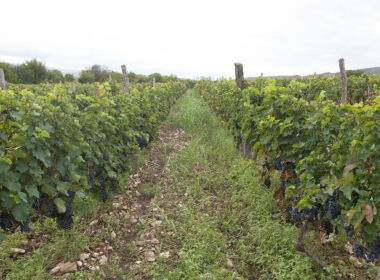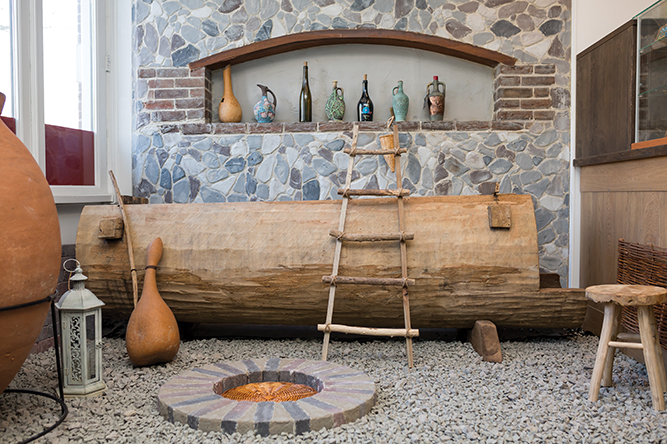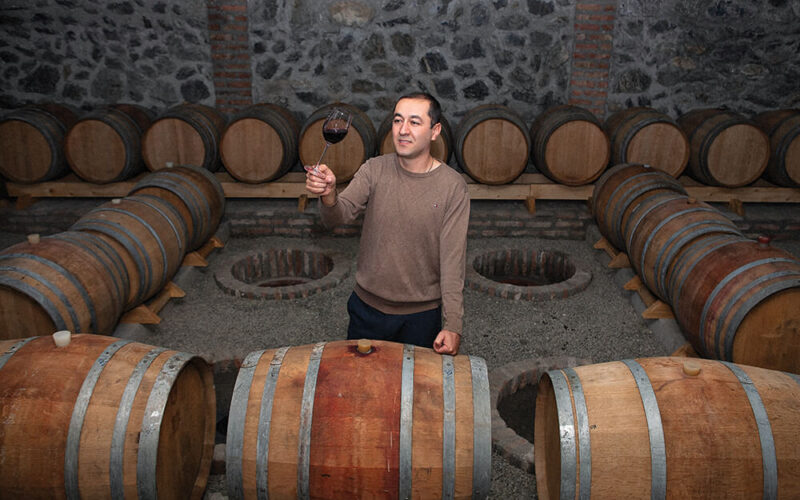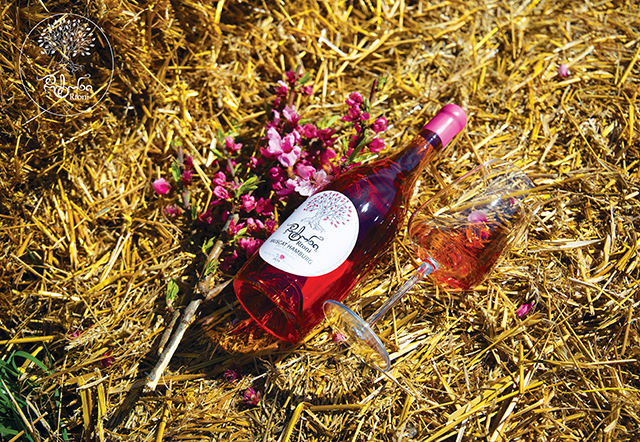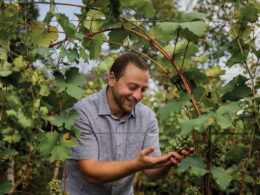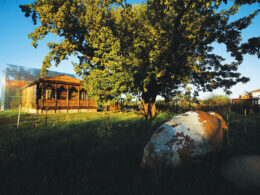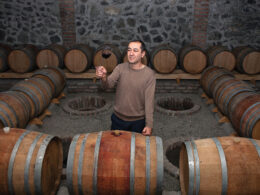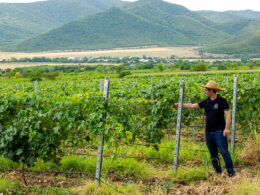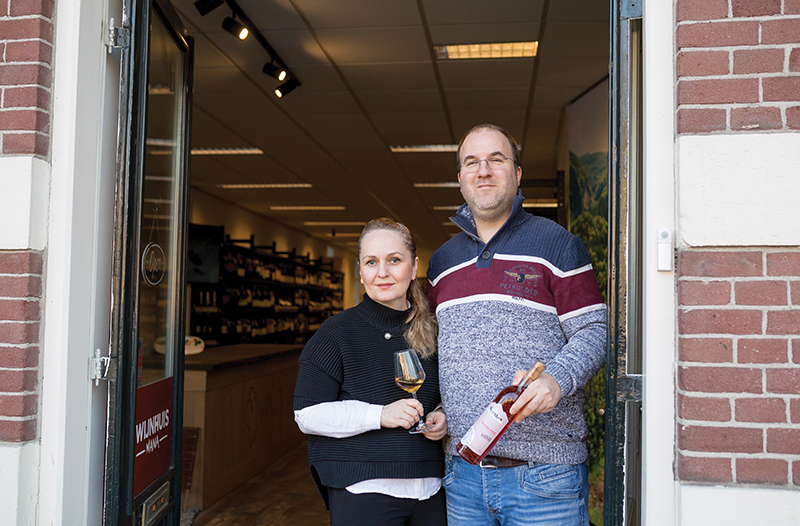
In a city of Purmerend, near Amsterdam Mana Bleeker-Ottmer and Peter Bleeker run a Mana wine house. It carries a selection of 125 wines, from 30 large, medium, and small Georgian wineries, including, “Vazisubani Estate”, “Dakishvili Family Vineyards”, “Solomnishvili Winery”, Baia’s Wine”, “Nareklishvili & Son’s Winery”, “Babaneuris Marani”, “Viniveria” and others. The wine house annually participates in up to six professional exhibitions, held in the Netherlands, where it presents Georgian wine to the industry specialists, wine writers, sommeliers, and representatives of HORECA. Mana and Peter are especially proud of popularizing amber wine in the Netherlands, which was largely unknown to the local population.
Mana Bleeker-Ottmer: “We established georgische-wijn-import.nl, also known as Ghvino.nl in 2016. Georgian wine is and has always been an important part of Georgian culture, which always motivated us to present this part of our tradition and culture to Europe and share our emotions and love with foreign consumers, as well as wine professionals. This is precisely why we opened the wine house named Wijnhuis-mana (wijnhuis-mana.nl), where we regularly hold tastings for industry professionals and consumers. We host the guests ourselves and introduce them to the history, tradition, and culture of Georgian wine during the tastings. Georgian wines at Wijnhuis-mana stand among the famous brands such as Clos Saint Jean Chateauneuf Du Pape, Château de la Charrière, Fontanafredda, Vintae,Château Musar, Becker Landgraf J2, Bonnet-Ponson, Yves Cuilleron.
It is not easy to attract a Dutch consumer, who knows very little about Georgian wine. You need a lot of time, a lot of work, motivation, and investment, but everything is possible if you love what you do.
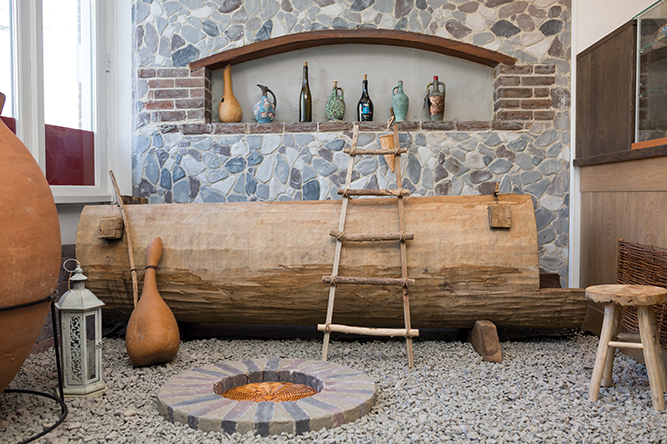
We started everything from scratch: I remember when our first palette of wine arrived, me and Peter looked at each other and said: “What are we going to do with so much wine?”. We began with a website, held tastings, and tried to raise awareness. We did everything ourselves. Peter is an IT specialist, he made the company website. Our son designed the logo. We even distributed brochures ourselves. It is hard to take everything into your hands, but, at the same time, it is so gratifying! We know every breath that our company takes
Import
Time, hard work, and appreciation brought us to where we are now. Of course, it would be impossible without the support of our Georgian partners, friends, and winemakers. It is harder than it looks to establish yourself on the European market. Today, 6 years in, we import 125 varieties of wine from Georgia. Our main goal is to promote small and medium wineries and amber wine. Offering high-quality wine to demanding Dutch consumers is crucial. And of course, we have to consider the local competition.
Dutch market
There is a noticeable increase in the popularity of Georgian wine in the Netherlands over the last period. This is due to various activities, tastings, exhibitions, participation in festivals, and increased import. But despite all this, we still cannot say that the demand for Georgian wine is high. Most local consumers have not even tried it.
We carefully choose the best wines for the Dutch market, which, for now, can be considered a tough market for Georgian wines. Amber wine needs special attention, because it is hard to understand, not only for consumers but even for professional chefs, who are having a hard time pairing it with dishes, despite its popularity in many countries and its successful pairing with both European and Asian cuisines. We participate in many tastings to introduce and promote this unique wine. These events are frequently visited by HORECA representatives, sommeliers, and wine professionals. As for consumer tastings, we often hold them ourselves.
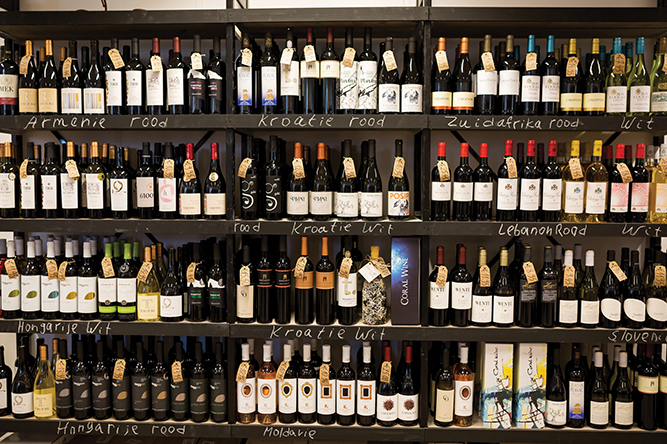
Restaurants, consumers, bloggers
Despite many difficulties, we are proud to know that the wine we import is represented in various restaurants, stores, and wine bars around Holland and Belgium. In competitions, these wines receive praise from wine bloggers and professionals. We actively work with stores that carry a selection of natural wines and do not solely focus on French, Italian, or other famous varieties in Europe, but rather seek out wines that are unique and different.
Georgische-wijn-import.nl also imports wine to Belgium, where it is sold in a price category higher than in Holland (price ranges from 15-22 EUR). I think that Georgian winemakers should focus on constantly providing high-quality wine to the European market, especially because two of their biggest export markets (Ukraine and Russia) are at war, and finding alternative markets is crucial.
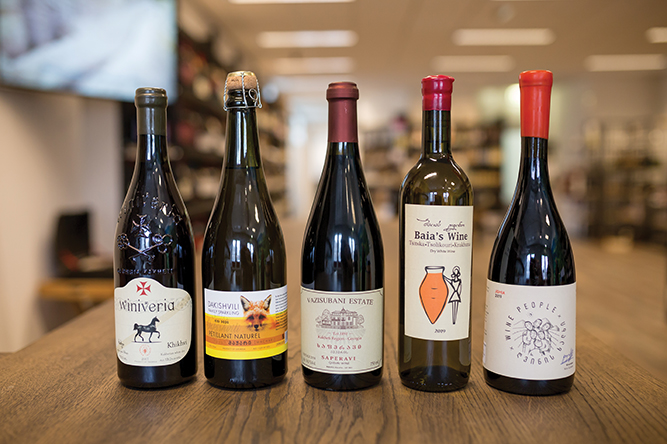
Amber wine, Saperavi, and rare Georgian varieties
To be honest, I don’t know why we chose to go a difficult route and introduce the Dutch to the amber wine – wine that they knew nothing about. Probably because our goal was not merely to sell wine. We wanted locals to try and fall in love with the wine that had its category on the OIV special wine list. I am glad that many of our customers first try amber wine at our place. Most of them like it, but for some, it needs some “getting used to”. So, we constantly hold tastings, introduce the wine and explain it.
I’d also like to say that it would be great if Georgian winemakers indicated “amber wine” on the label, instead of “white dry wine”. The consumer needs to know that he or she is trying amber wine and not European white wine.
Our customers especially like Saperavi (the ones that prefer full-bodied wines). I can say with certainty that a well-made, quality Saperavi has a good chance of gaining ground here.
Even though the diversity of Georgian grape varieties is the strongest advantage for Georgian wines, Georgian varieties (especially, rare ones) are unfamiliar to the Dutch. So, we try our best to introduce them to European consumers. The finest expression of wines made using the rarest Georgian grape varieties is the Wine People collection from “Teliani Valley”, which we will soon introduce to our customers.
And then there are Pet-Nats: “Dakishvili Family Vineyards” Machari, the only Pet-Nat we hold at the moment, already gained recognition, so we decided to increase our collection of Georgian Pet-Nats for the future.
Foreign publications and writers on Georgian wine
Georgische-wijn-import.nl ( Ghvino.nl) actively works with various leading Dutch publication houses, including wine magazines that identify and award the best wines. PERSWIJN is one such publication. All importers, including Ghvino.nl annually send them wines for evaluation. For their “103 best of 2020” Mana and Peter sent several Georgian wines. At the end of the blind tasting, “Nareklishvili & Son’s Winery” Saperavi received a gold medal. Within the same competition, the jury named “Baia’s Wine” (Tsitska-Tsolikouri-Krakhuna) among the 103 of the best of the year.
Ghvino.nl also collaborates with Simon J. Wolf, Harold Hamersma, Mariella Beukers, Martin, and Kris Kulmans, who frequently write about Georgian wines presented at Mana and Peter’s Wine House.
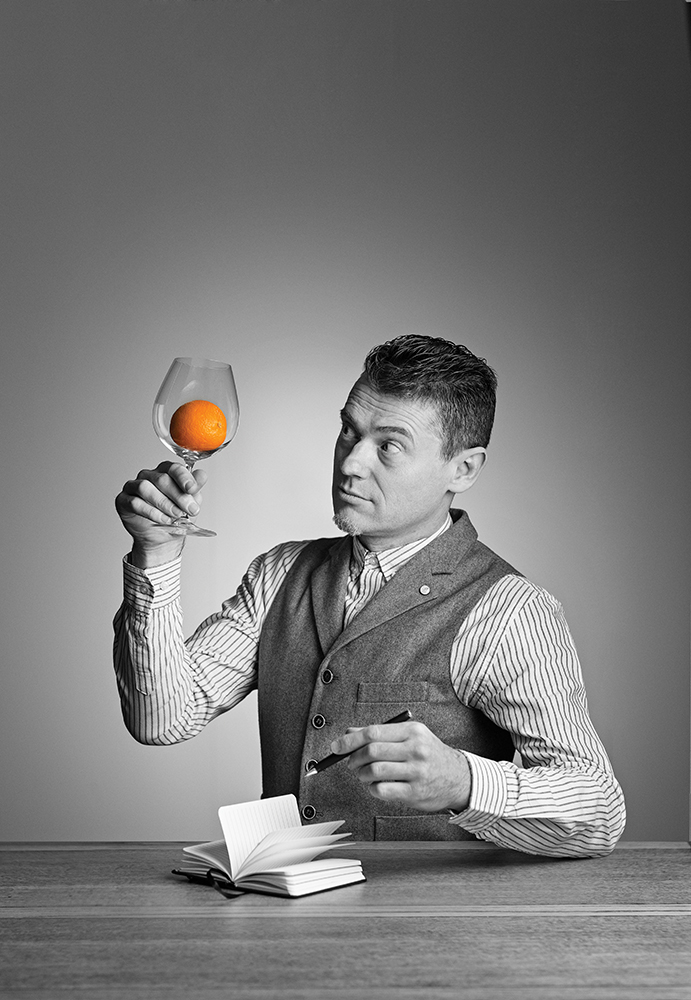
In conversation with Simon J. Wolf he says: “There is no other style of wine that has survived and stayed with us so long throughout history. This is what I love about the Georgian amber tradition – it’s still with us, after 8,000 years. So not only is it a delicious and complex beverage, but it also carries the profundity of history and culture from past millennia along with it.
To me, Georgia’s authentic winemaking tradition is all about making wines in the most natural, hands-off way possible. The use of qvevri should not require anything more than grapes, and maybe a pinch of sulfur here and there: it is about preserving the integrity of the grape and its “mother” [chacha], about getting the flavors and aromas of the region, the year and the varietal in the bottle. Georgians say “wine is born” not “wine is made”. The qvevri is like a womb for the fermenting grapes and the wine that will result from the transformation.
What is also interesting is the stylistic variety across Georgia. Initially, I got to know the textured, tannic amber wines from East Kakheti. Made with very long skin and stem contact, they are formidable wines that demand your attention. But head to Western Georgia and the traditional style is different – lighter, more playful, and with its own set of indigenous grape varieties. It is not for nothing that Georgia has become a kind of poster boy for natural wine. This style of minimal intervention winemaking is in people’s blood here.
It’s been wonderful to see the explosion of interest in boutique and natural wineries in the Netherlands, with particular references to Georgian qvevri wine. Thanks to the efforts of passionate wine importers and retailers like Ghvino, Andere Wijn, Vaime, and Zuiverwijnen, there is now an abundance of top Georgian artisanal wines available here.
It blows my mind that I can drink amazing bottles from Baia’s Wine, Archil Guniava, or Do Re Mi whenever I feel like it. And of course, this means that a new and younger audience of wine lovers are getting to know these amazing wines.
Martin Kuhlman RV | www.wijngekken.nl |
As a wine professional, I have already been able to judge many wines in my life. I don’t have any favorite wines. Maybe personally, but that’s irrelevant. It’s about the quality of the wine. Quality and authenticity, that’s what it’s all about.

It is the same with qvevri wines from Georgia. Qvevri wines are among the most complex and authentic wines in the world. Qvevri wines may be a bit difficult for the novice wine lover, but any complex wine is difficult.
Qvevri wines often have a decent dose of tannin. For that reason, I am more in favor of a qvevri wine with a few months of wood aging in new oak barrels. This rounds off the tannins, makes the wines more accessible, and gives the wine a more ‘western’ touch. Unfortunately, this has a negative price effect on the consumer.
Rkatsiteli, Mtsvane and Saperavi from the qvevri
Of course, this also applies to amber wines. Not that these wines need aging in oak barrels (which might be very interesting), but amber wines are also often dry wines, rich in tannins, and you have to get used to that as a wine lover. Once you’re used to it, you don’t want an ordinary Chardonnay anymore. Especially the amber wines of the Rkatsiteli and the Mtsvane are bursting with complexity, while the red Saperavi is tamed by the qvevri. The combination of these grape varieties and the qvevri have been inseparable from each other for centuries. The grapes belong in the qvevri and not just for the complexity.
Georgian wines and the Dutch wine market
Georgian qvevri wines are not cheap. Not that they are over-priced, because making wine in the qvevri is risky and labor-intensive. During the growing season, the grapes must be pampered, using little or no insecticides. Strict selection after picking is a must, as no unripe or damaged grapes are allowed to enter the qvevri. Unfortunately, the average wine lover in the Netherlands does not have this knowledge and wine budget. In addition, there are many fine wines for sale at this price level from more well-known wine countries, which are also more accessible to Western wine tastes.
So unfortunately Georgian qvevri wines continue to be sold on the margins and that might be a good thing. The range of Georgian qvevri wines is small on the scale of the European wine market. Qvevri wines are and remain interesting wines for the real enthusiast.
Leading Dutch online publications about Ghvino.nl
Proefschrift | proefschrift.nl/wine-professional-box-ghvino |
“With this unique and extensive selection, they can rightly call themselves the Georgian wine specialist in the Netherlands. Via Georgische-wijn-import.nl they deliver to both catering and (online) shops.”
Wijntjes met Esther | wijntjesmetesther.nl/georgische-wijnen |
„Ghvino.nl (Ghvino is the Georgian word for wine) is the place where you can buy all kinds of Georgian wines. Behind this online wine store are Peter Bleeker and his Georgian wife Mana Ottmer. Together they want to introduce as many people as possible to this (for most) still relatively unknown wine country.“
De Grote Hamersma | degrotehamersma.nl/wine/39251/2020/tchotiashvili-vineyards |
“Presenting a multitude of flavors in many contemporary restaurants, plus the fact that the new generation of chefs and sommeliers have a great penchant for authenticity, pure nature (amber wines are almost always organic or biodynamic; mass production is impossible), small-scale and distinction, has ensured that more and more wine lists can be found in which the offer is divided into red, white, rosé and amber.”

